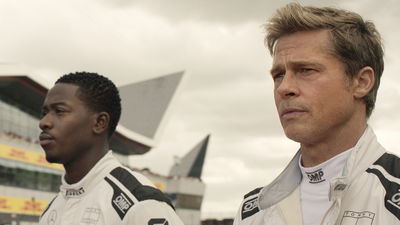Well, Duh – Study Shows Touchscreens In Cars Are More Distracting Than Physical Buttons

For years now, many automakers have been ditching the old-fashioned physical buttons that control in-car functions like multimedia, climate controls and more. Even gear selectors, in some cases. There are pros and cons to this, but a study carried out by Swedish car magazine Vi Bilägare has proved that physical buttons are much less time-consuming to use than touchscreens. By extension, buttons are less distracting than touchscreens, and you’ll spend less time looking away from the road.
Vi Bilägare’s study involved testing a dozen vehicles – the majority were newer cars whose functions are more widely performed through touchscreens, including the BMW iX, Tesla Model 3, SEAT Leon and Dacia Sandero, but one 2005 Volvo V70 with traditional physical controls was also part of the line-up.

Participants were given some time to familiarise themselves with the cars’ controls before being timed to perform the following actions while driving at 68mph:
- Turning on the heated seats, increasing the temperature by two degrees, and starting the defroster
- Turning on the radio and tuning it to a specific station
- Resetting the trip computer
- Turning the instrument lights onto their lowest setting and turning off the centre display
The study reportedly showed that while it took drivers just 10 seconds to do this in the old Volvo, it took drivers of the BMW iX roughly three times as long at 30.4 seconds, and up to a sluggish 44.9 seconds in the MG Marvel R.

The magazine was keen to point out that it wasn’t just the lack of physical controls that had an effect on the speed users could carry out the tasks. It also depended on the user interfaces of each system – according to Vi Bilägare, the iX’s system is one of the most complicated ever designed, and the lack of a backlight on the SEAT Leon’s touch-sensitive climate controls makes them harder to use.
The argument for centralised touchscreen-based controls from manufacturers like Tesla has long been that, given functions aren’t bound by physical controls, the system can be continually and easily updated – there’s also no denying that it allows for a minimalistic and clean-looking dashboard.

However, the worrying fact is that the increased time spent faffing around with many of the most basic functions of a car could be dangerous. With its findings calculated alongside the speed the cars were driving, Vi Bilägare managed to convert this into a distance each car was driving while users were fiddling with the controls. This ranged from a mere 1000 feet (306 metres) in the 2005 Volvo, and up to eight-tenths of a mile (1372 metres) in the MG Marvel R. The distance spent performing the actions in most of the other cars sat between around 2000 to 3000 feet (600 to 900 metres), with the Dacia Sandero and Volvo C40 taking just over 1300 feet (400 metres).
You might think these calculations are a little pedantic, but the truth is the more time you spend trying to adjust the car’s radio, climate controls or lighting, the less time you spend focusing on the road ahead of you. Plus, regardless of the time you might take to do something, physical buttons allow you to do it through touch, meaning you won’t necessarily need to take your eyes off the road at all.
Don’t get us wrong, as gimmicky as some of the latest in-car features and over-the-air updates can be, maybe it’s time to rein in the touchscreens and do at least the basic things the old fashioned way. Perhaps the tide is changing, though, with the design chief of automaker DS having recently said the future of the brand’s cars may see them ditch touchscreens entirely in favour of gesture controls. What do you think is the best solution – physical buttons, touchscreens or a mixture of both?













Comments
A mixture of both and a good ui is what’s needed. Recently I’ve added a touchscreen radio to my car and also got a job as a van driver. One of the first things I’ve noticed is how much more distracting and difficult to use while driving the system in the van is compared with my car.
The size and locations of the buttons, the amount of text etc all contribute to its ease of use. My car is less text, more big simple icons, less functions, but straight to the point and only what I need and nothing more, also has a few hidden gestures such as being able to swipe across the whole screen to change song if pressing the big next button is too difficult. All these seemingly little things make a world of a difference